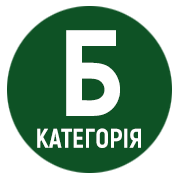ART THERAPY TECHNIQUES IN FAMILY COUNSELING
DOI:
https://doi.org/10.32782/psy-2024-3-11Keywords:
family psychology, art therapy, joint drawing, joint coping, metaphorical associative imagesAbstract
The use of art therapy techniques in family counseling helps to establish family relationships, has a positive effect on the emotional state of spouses, and improves the ability to regulate emotions. Art therapy is useful in the work with families who have experienced traumatic events or who are working to overcome a crisis in their relationships. Creative work together can activate the mechanism of "joint coping" of spouses. Couples’ creative work together allows them to clarify situations, solve current problems, and build understanding and relationships through non-verbal communication and discussing their creative work products. Art therapy can help to build relationships between parents and children, for example, through the process of drawing together. The practice of art therapy in family counseling can actively involve techniques of using metaphorical associative images. Art therapy techniques perform important functions in family counseling: The function of establishing a therapy alliance (help form an atmosphere of safety and trust between the counselor and the client), the diagnostic function (provide the counselor with valuable material for making working hypotheses, suggest directions for further research; provide information about the relationships between family members, their statuses, roles, usual ways of communicating, hidden family dysfunctions); self-knowledge function ( make it easier for clients to understand, realize and accept their emotional reactions, displaced conflicts, problems, experiences); communicative function ( joint participation in creative activities helps to build trust and mutual acceptance, allows to freely express their feelings, declare their needs, receive and provide support); function of emotional self-regulation (socially acceptable response to negative emotions, their understanding and legalization of the formation of the ability to emotional self-regulation can occur); transformational function (the ability to change the view of the situation, develop new response strategies and new constructive solutions).
References
Sutherland J. Art therapy with families. The Journal of Individual Psychology. 2011. Vol. 67 (3). Р. 292–304.
Kerr C., Hoshino J., Sutherland J., Parashak S.T., McCarley L.L. Family art therapy: Foundations of theory and practice. Routledge/Taylor & Francis Group. 2008. 260 р.
Coulter A.M. Family art therapy: Dots, meaning and metaphor / C. Kerr (Ed.), Multicultural family art therapy Routledge/Taylor & Francis Group. 2015. Р. 90–104.
Futterman Collier A., Wayment H.A. Enhancing and explaining art-making for mood-repair: The benefits of positive growth-oriented instructions and quiet ego contemplation. Psychology of Aesthetics, Creativity, and the Arts. 2021. Vol. 15 (2). Р. 363–376.
Fancourt D., Garnett C., Müllensiefen D. The relationship between demographics, behavioral and experiential engagement factors, and the use of artistic creative activities to regulate emotions. Psychology of Aesthetics, Creativity, and the Arts. 2020. Р. 1–11.
Klorer P.G. Art Therapy with Traumatized Families / L. Carey (Ed.), Expressive and creative arts methods for trauma survivors. Jessica Kingsley Publishers, 2006. Р. 115–131.
Zajdel M., Helgeson V.S. A communal coping intervention for couples managing chronic illness: Proof-of-concept study. Couple and Family Psychology: Research and Practice, 2022.
Nielsen F., Feijo I., Renshall K., Starling J. Family art therapy: A contribution to mental health treatment in an adolescent inpatient setting. Australian and New Zealand Journal of Family Therapy. 2021. Vol. 42 (2). Р. 145–159.
Fjellfeldt M., Rokka D. Practitioner perspectives on art therapy with couples in relational crisis: a qualitative exploration. International journal of art therapy. 2022. Vol. 27. № 4. Р. 152–158.
Gavron T. Meeting on common ground: Assessing parent-child relationships through the Joint Painting Procedure. Art Therapy. 2013. Vol. 30 (1). Р. 12–19.
Baer U. Gefühlssterne, Angstfresser, Verwandlungsbilder: Kunst und Gestaltungstherapeutische Methoden und Modelle. Sachbücher angewandte Psychologie. 2007. 408 р.






